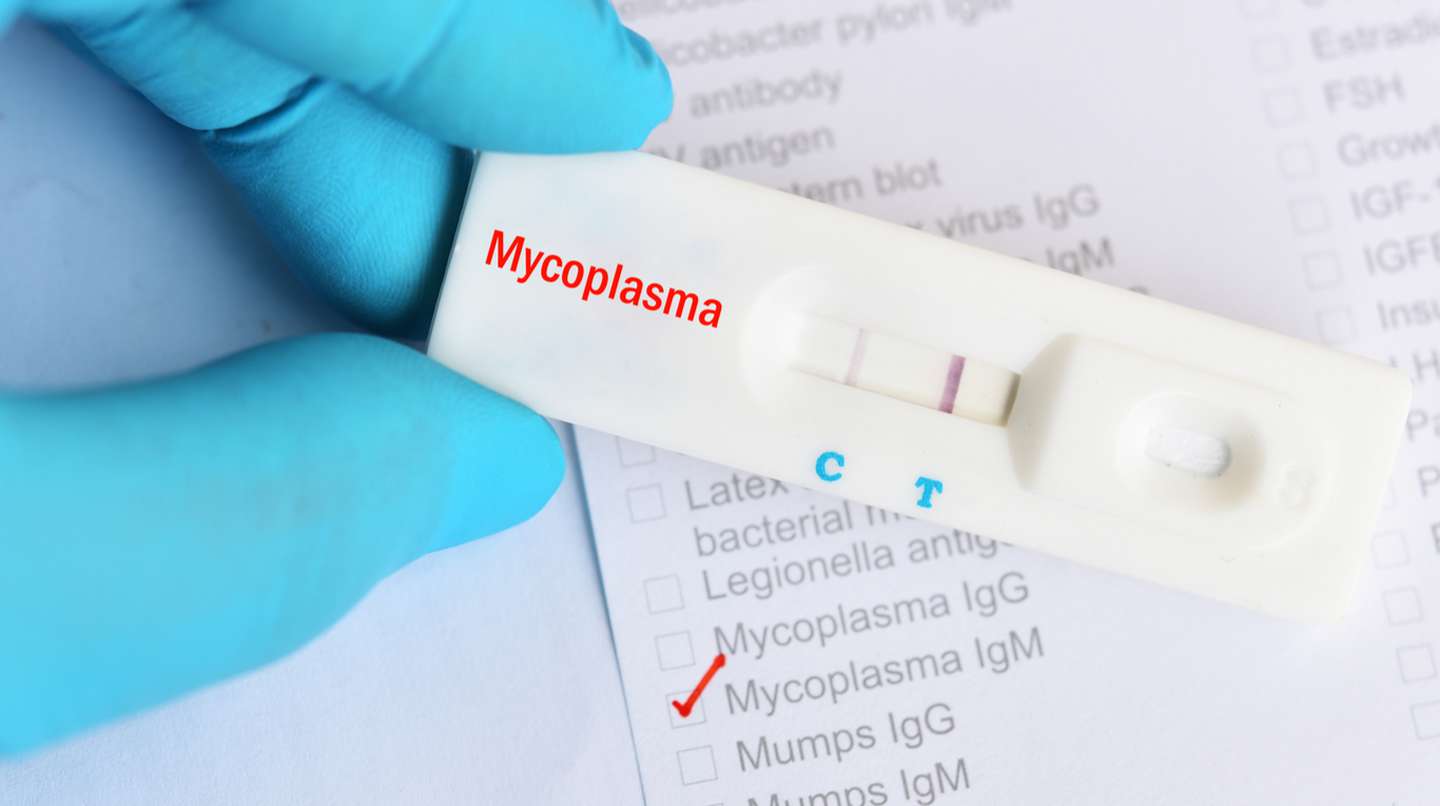
Mycoplasma
Mycoplasma is a bacterium that infects the urethra, cervix, throat, and anal mucosa. Mycoplasma infections in the urinary and reproductive system are caused by Mycoplasma genitalium and Mycoplasma hominis. These two kinds of mycoplasma are usually found in the urinary and reproductive systems. Approximately 40-70% of patients have no symptoms, 15-20% of non-gonococcal urethritis and 30% of recurrent urinary tract infections are caused by Mycoplasma infections in the urinary and reproductive system. Research shows that in 2020, about 7.8% of women in Hong Kong will be infected with Mycoplasma in the urinary and reproductive system, about 10% of symptomatic non-gonococcal urethritis and 2% of asymptomatic non-gonococcal urethritis are related to the urinary and reproductive system. Related to mycoplasma infection. The survey showed that about 7% of people who had had anal sex had mycoplasma infection (asymptomatic), while some 1% of oral mycoplasma infections (asymptomatic)
Mycoplasma drug resistance
Mycoplasma genitalium is the smallest bacterium known. It is estimated that about 1-2% of the population carry this bacterium, especially among teenagers and young adults. In the 2020 study, 48.6% of patients infected with Mycoplasma genitalium contained both macrolide and fluoroquinolone resistance-related mutations1. The biggest problem with Mycoplasma genitalium is that it has high drug resistance. Some patients receive a course of antibiotics from a doctor after they develop symptoms. Sometimes it is difficult to kill the highly drug-resistant Mycoplasma genitalium. As a result, they are repeatedly infected and are more likely to be more resistant. Some researchers have warned that Mycoplasma genitalium has become increasingly resistant to antibiotics, including azithromycin and doxycycline. Researchers worry that it will become more widespread due to its increasing resistance2.
Related Mycoplasma Genitalium Drug Sensitivity Test
The resistance levels of Mycoplasma hominis and Ureaplasma urealyticum to antibacterial agents are quite different. However, the resistance rate of Mycoplasma hominis strains is generally higher than that of Ureaplasma Urealyticum strains.
Drug resistance of Mycoplasma hominis & Ureaplasma Urealyticum
For Mycoplasma hominis
Ciprofloxacin has the highest drug resistance rate (77.27%), followed by macrolides (azithromycin 38.88%, clarithromycin and erythromycin 33.33%) and ofloxacin Ofloxacin (27.77%). The resistance rates of tetracycline, josamycin, protomycin, and doxycycline were low, which were 16.66%, 11.11%, 11.11%, and 11.11%, respectively.
Ureaplasma urealyticum resistance
The resistance rate of ciprofloxacin is also very high (51.72%), while the resistance rate to other antibiotics tested is significantly lower, namely ofloxacin (16.09%), red mold (16.09%), clarithromycin (9.19%), azithromycin (8.05%), tetracycline (5.75%), protomycin (3.45%), josamycin (2.3%) and doxycycline (2.3%) ) 2.30%) 3
Strengthen the detection of mycoplasma
If testing is strengthened, it can help prevent Super Mycoplasma genitalium bacteria. In fact, the method to detect this bacterium is very simple. As long as the urine, cervix, and vaginal swabs (swabs) are tested, the diagnosis can be made.
Importance of pathogen cultivation and drug sensitivity testing
Pathogen cultivation (seeding bacteria) allows the pathogen to multiply rapidly in the culture medium, which further helps diagnose whether it is infected by the pathogen. Drug susceptibility testing is to test the resistance of pathogens to a series of antibiotics. In terms of treatment, if the drug resistance of the bacteria is clear, doctors can avoid the use of related antibiotics to make the treatment course more effective and reduce the patient's unnecessary suffering.
Ref.
[1] : Macrolide and fluoroquinolone associated mutations in Mycoplasma genitalium in a retrospective study of male and female patients seeking care at a STI Clinic in Guangzhou, China, 2016-2018. BMC Infect Dis 2020 Dec 11;20:950.
[2] Outcomes of Resistance-guided Sequential Treatment of Mycoplasma genitalium Infections: A Prospective Evaluation. Clinical Infectious Disease, 2019:68 (15 February)
[3] : Antibiotic Susceptibility Profiles of Mycoplasma Hominis and Ureaplasma Urealyticum Isolated During a Population-Based Study Concerning Women Infertility in Northeast Romania. Braz J Microbiol 2011 Jan-Mar;42(1):256–260.
[4] Li Y, Su X, Le W, et al. Mycoplasma genitalium in Symptomatic Male Urethritis: Macrolide Use Is Associated With Increased Resistance. Clin Infect Dis. 2020;70(5):805-810.
[5] Pond MJ, Nori AV, Witney AA et. al. High prevalence of antibiotic-resistant Mycoplasma genitalium in nongonococcal urethritis: the need for routine testing and the inadequacy of current treatment options. Clin Infect Dis. 2014;58(5):631-637.
[6] Murray GL, Bradshaw CS, Bissessor M, et al. Increasing macrolide and fluoroquinolone resistance in Mycoplasma genitalium. Emerg Infect Dis 2017; 23:809–12
Anagrius C, Loré B, Jensen JS. Mycoplasma genitalium: prevalence, clinical significance, and transmission. Sex Transm Infect 2005; 81: 458–462., REF2 Falk L, Fredlund H, Jensen JS. Signs and symptoms of urethritis and cervicitis among women with or without Mycoplasma genitalium or Chlamydia trachomatis infection. Sex Transm Infect 2005; 81: 73–78. REF 3 Falk L, Fredlund H, Jensen JS. Symptomatic urethritis is more prevalent in men infected with Mycoplasma genitalium than with Chlamydia trachomatis. Sex Transm Infect 2004; 80: 289–293.).
(REF: Taylor-Robinson D, Jensen JS. Mycoplasma genitalium: from chrysalis to multicolored butterfly. Clin Microbiol Rev 2011;24:498–514.)
(REF: Molecular detection of Mycoplasma genitalium in endocervical swabs and associated rates of macrolide and fluoroquinolone resistance in Hong Kong. 2020 https://www.hkmj.org/abstracts/v26n5/390.htm)
(REF: Yu JT, Tang WY, Lau KH, et al. Role of Mycoplasma genitalium and Ureaplasma urealyticum in non-gonococcal urethritis in Hong Kong. Hong Kong Med J 2008;14:125-9. Pubmed ID: 18382019)
(ref: Symptoms, Sites, and Significance of Mycoplasma genitalium in Men Who Have Sex with Men. 2019. https://www.ncbi.nlm.nih.gov/pmc/articles/PMC6433010/ )
(ref: Prevalence of Mycoplasma genitalium by anatomical site in men who have sex with men: a systematic review and meta-analysis. 2020. https://pubmed.ncbi.nlm.nih.gov/32341023/ )
(Text Only)

